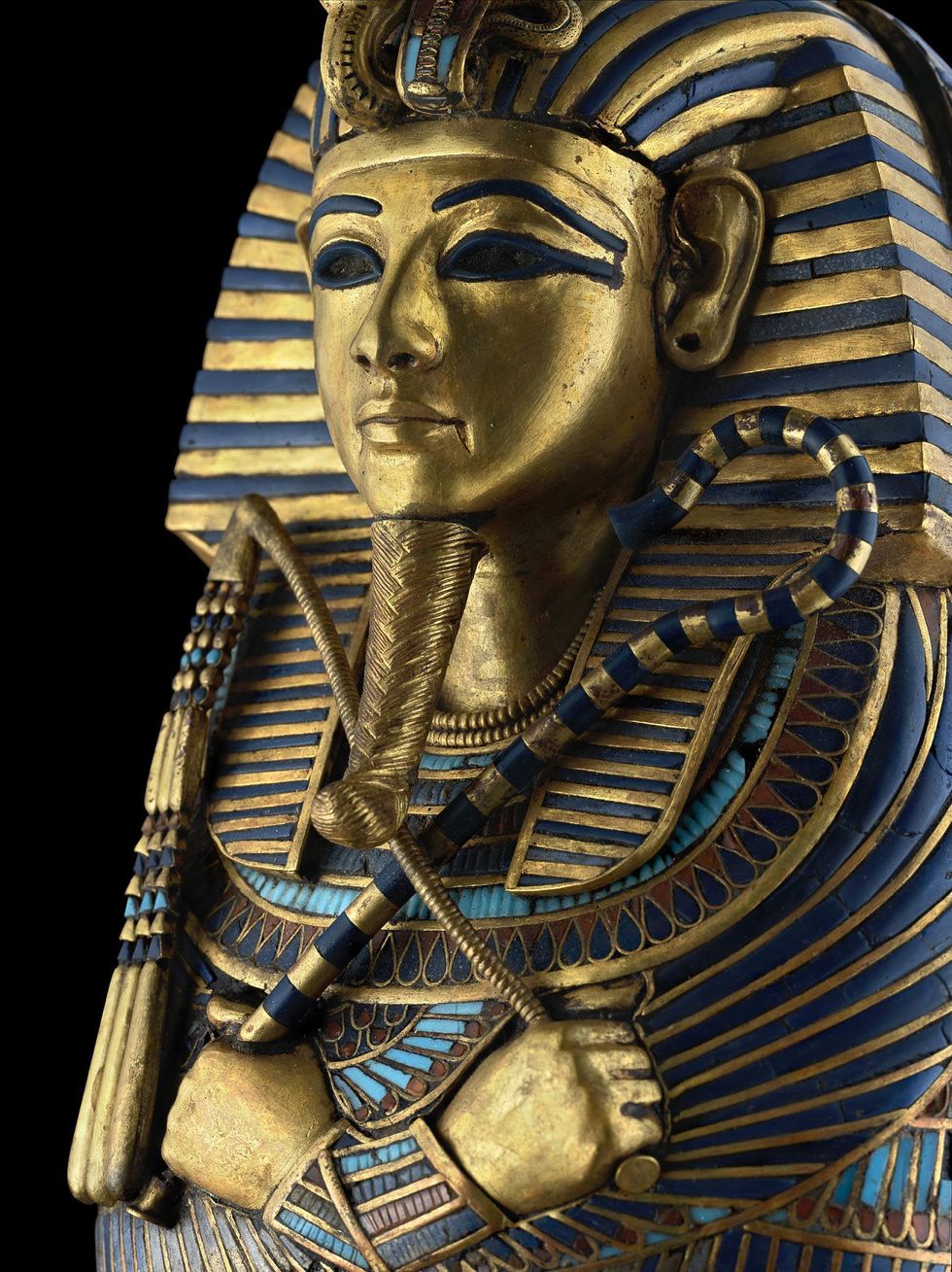Pieces from the Past
A tiny piece of ancient history steals the show at MFAH's Tutankhamun: The Golden King and the Great Pharaohs
Editor's note: This exhibition is organized by Arts and Exhibitions International, AEG Exhibitions and the National Geographic Society, in association with Egypt’s Supreme Council of Antiquities. Northern Trust is the proud cultural partner of the exhibition and American Airlines is the official airline. The Houston presentation of Tutankhamun: The Golden King and the Great Pharaohs is made possible by Apache.
Creating and installing an exhibition of priceless historical artworks is always an impressive undertaking, but when the cream-colored canopic stopper belonging to King Tut was wheeled into the gallery of the Museum of Fine Arts, Houston, an electric hush filled the room. The miniature portrait exemplifies the caliber of artworks found in Tutankhamun: The Golden King and the Great Pharaohs, a breath-taking exhibit at the museum through April 2012.
Dim lighting, save for one illuminated stream, filled the Museum of Fine Arts, Houston gallery and shone directly on the canopic stopper. The calcite stopper was used to encase the miniature coffinettes that contained King Tut’s mummified organs and, despite being just 24 centimeters tall, the alabaster carving is incredibly lifelike.
“This is billed as one of the greatest archeological discoveries of all time,” Mark Lach, senior vice president of Arts & Exhibitions International said. “We have been in this space for a month installing walls, lights and displays and we are very excited about this exhibit.”
The stopper is one of four found in Tutankhamun’s tomb by Howard Carter in 1922. Carved in the king’s likeness, right down to the detailed black-rimmed eyes and blush red lips, the stoppers were used to seal the cylindrical cavities that held coffinettes. It was important in the afterlife that the king’s organs were protected, so each was assigned one of the four sons of Horus as a guard. The human-headed Imstey watched over the liver, while the baboon-headed Hapy was in charge of the lungs. Duamutef the jackal-headed son guarded the stomach and Qebehsenuef, the falcon-headed, protected the intestines.
To further protect the king in the afterlife, four tutelary goddesses: Isis, Nephthys, Neith and Selket also stood their ground in a space called the Treasury, a small room east of Tut’s burial chamber.
The glowing calcite stopper was held with reverent care by two white-gloved handlers who travel from Egypt with the various pieces. The women carefully placed the stopper in the display case and then stepped away, allowing the boy king to take center stage and stare back at curious onlookers.
The installation was an appropriate ceremony for King Tutankhamun, a leader who many believe died far too young.
Tutankhamun: The Golden King and the Great Pharaohs runs October 16, 2011 to April 15, 2012 at the Museum of Fine Arts, Houston's Caroline Wiess Law Building at 1001 Bissonnet. For more information, call 713.639.7300 or visit mfah.org.
For tickets, call the King Tut Ticket Hotline at 1-888-931-4TUT (4888)
Tut Exhibition Entry Times are:
Monday-Wednesday: 10 a.m. – 3:30 p.m. (Opens at 9 a.m., closes at 5 p.m.)
Thursday- Saturday: 10 a.m. – 7:30 p.m. (Opens at 9:30 a.m., closes at 9 p.m.)
Sunday: 12:30 p.m. – 5:30 p.m. (Opens at 12:15 p.m., closes at 7 p.m.)
